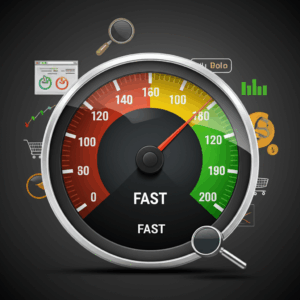- Why Website Speed Matters for SEO
- How Website Speed Affects Google Rankings
- The Impact of Website Speed on Sales
- Boosting Conversion Rates with Improved Website Speed
- Optimizing Your Website for Speed
- Website Speed: A Continuous Effort
Website Speed: Crucial for SEO & Sales
Website speed is a critical factor for both search engine optimization (SEO) and sales. In today’s fast-paced digital world, users expect websites to load quickly and efficiently. A slow website can lead to a poor user experience, increased bounce rates, and ultimately, lost revenue. Optimizing your website’s speed is no longer a luxury but a necessity for online success.
Why Website Speed Matters for SEO

Search engines, particularly Google, prioritize user experience. A slow-loading website negatively impacts user experience, and as a result, Google is less likely to rank it highly in search results. Google has explicitly stated that page speed is a ranking factor for both desktop and mobile searches. Therefore, improving your website speed directly contributes to better SEO performance and higher search rankings.
How Website Speed Affects Google Rankings
Google’s algorithms consider several speed metrics when ranking websites. These include:
First Contentful Paint (FCP): Measures how quickly the browser renders the first bit of content from the DOM. This gives users the impression that the page is loading.
Largest Contentful Paint (LCP): Measures the render time of the largest image or text block visible within the viewport. This metric is crucial for perceived load speed.
First Input Delay (FID): Measures the time it takes for a page to become interactive. A low FID ensures that users can quickly interact with elements like buttons and forms.
Cumulative Layout Shift (CLS): Measures visual stability. A high CLS indicates that elements on the page are shifting unexpectedly, which can be frustrating for users.
Time to First Byte (TTFB): Measures the time it takes for the browser to receive the first byte of data from the server. A slow TTFB indicates server-side issues.
By optimizing these metrics, you can improve your website’s ranking potential and attract more organic traffic.
The Impact of Website Speed on Sales
Beyond SEO, website speed directly influences your bottom line. Studies have shown a strong correlation between page load time and conversion rates. A faster website leads to a more positive user experience, encouraging visitors to stay longer, explore more pages, and ultimately, make a purchase.
Boosting Conversion Rates with Improved Website Speed
Here’s how website speed improves conversion rates:
Reduced Bounce Rate: A faster website keeps users engaged, reducing the likelihood of them leaving before taking desired actions.
Improved User Experience: A smooth and seamless browsing experience creates a positive impression, fostering trust and encouraging conversions.
Increased Mobile Conversions: With the majority of internet traffic now coming from mobile devices, optimizing website speed for mobile is crucial for driving sales.
Enhanced Customer Satisfaction: A fast-loading website contributes to overall customer satisfaction, which can lead to repeat business and positive word-of-mouth referrals.
Optimizing Your Website for Speed
Optimizing website speed isn’t a one-time task, but an ongoing process. Here are some key strategies to improve your website’s loading time:
Optimize Images: Compress images without sacrificing quality to reduce file sizes and improve load times. Use appropriate image formats like WebP for better compression.
Leverage Browser Caching: Enable browser caching to store static assets like images and CSS files on the user’s device, reducing the amount of data that needs to be downloaded on subsequent visits.
Minify CSS and JavaScript: Remove unnecessary characters and whitespace from your CSS and JavaScript files to reduce their size and improve download speed.
Use a Content Delivery Network (CDN): A CDN distributes your website’s content across multiple servers around the world, ensuring that users can access it quickly from any location.
Choose a Fast Hosting Provider: Your hosting provider plays a crucial role in your website’s speed. Opt for a reliable provider with fast servers and optimized infrastructure.
Implement Mobile-First Design: Design your website with mobile devices in mind to ensure optimal performance on smaller screens and slower connections.
Reduce HTTP Requests: Minimize the number of HTTP requests by combining files, using CSS sprites, and inlining critical CSS.
Website Speed: A Continuous Effort
Monitoring and improving your website speed is a continuous process. Regularly test your website’s performance using tools like Google PageSpeed Insights and GTmetrix, identify areas for improvement, and implement the necessary optimizations. By prioritizing website speed, you can significantly improve your SEO, boost your conversion rates, and ultimately achieve greater online success. Maintaining a fast and efficient website is a crucial investment in today’s competitive digital landscape. It’s not just about technical improvements, it’s about ensuring a positive and engaging experience for every visitor, leading to a stronger online presence and increased profitability.











Leave a Reply